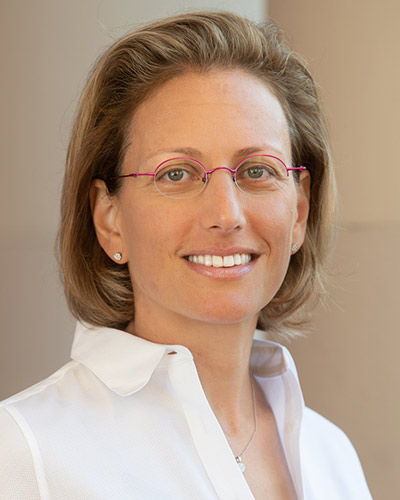April 09, 2021 | Deborah Kotz

Research Calls Attention to Dangerous Noise Levels in Gym to Protect Against Noise Induced Hearing Loss
Fitness center instructors often turn up music volumes significantly during classes – sometimes loud enough to cause hearing damage – based on an assumption that participants will work out more intensely when volumes are raised. A new University of Maryland School of Medicine (UMSOM) study, however, found that those who attend indoor cycling (“spinning”) classes do not lower the intensity of their workouts when the volume is reduced to a safer decibel level. The findings were published recently in the journal Noise & Health.
“Our findings make a strong case for reducing music volumes in fitness classes to protect against hearing loss without sacrificing the intensity of the workout,” said study corresponding author Ronna Hertzano, MD, PhD, Associate Professor of Otorhinolaryngology-Head & Neck Surgery at UMSOM and avid gym goer before the COVID-19 pandemic. “In fact, our study participants reported that they preferred the reduced sound level during their workouts.”
Previous research suggests that the average sound levels in group fitness classes frequently exceed 90 decibels (as loud as an approaching subway train) and often exceed 100 decibels (as loud as a power lawn mower). The National Institute of Occupational Safety and Health recommends that a noise exposure of one hour not exceed 94 decibels, whereas exposures to levels of 100 decibels not exceed 15 minutes to protect against permanent hearing loss.

Overall, more than one in four study participants reported experiencing auditory symptoms following their spinning class, including ringing in their ears or muffled hearing. For those in classes with the highest sound levels, nearly one-third of participants reported that the sound level was too high, and nearly one-third reported that they would prefer a decrease of the music level. Only three of the participants reported using hearing protection, such as ear plugs, during the study.
“We also found that participants were most likely to report that the music level was satisfactory in classes where sound levels were lowest,” said Dr. Hertzano. “Importantly, the gym elected to maintain the music at the softer level after we made them aware of our study results.”
Lawrance Lee, a 4th year medical student at UMSOM; Benjamin Shuster, a research fellow in the Department of Otorhinolaryngology-Head & Neck Surgery at UMSOM; and Yang Song, PhD, a postdoctoral fellow in the Institute for Genome Sciences at UMSOM all served as lead co-authors on the paper. Researchers from Massachusetts Eye and Ear in Boston and Otolith Labs in Washington, DC, also participated in this study.
“This is an important new finding that calls attention to the dangers of sound levels in fitness classes and the subsequent hearing loss that can result from prolonged exposure,” said E. Albert Reece, MD, PhD, MBA, Executive Vice President for Medical Affairs, UM Baltimore, and the John Z. and Akiko K. Bowers Distinguished Professor and Dean, University of Maryland School of Medicine. "Fitness facilities should take note of the dangers highlighted in the new study finding and turn down the volume to protect against hearing damage.”
About the University of Maryland School of Medicine
Now in its third century, the University of Maryland School of Medicine was chartered in 1807 as the first public medical school in the United States. It continues today as one of the fastest growing, top-tier biomedical research enterprises in the world -- with 46 academic departments, centers, institutes, and programs, and a faculty of more than 3,000 physicians, scientists, and allied health professionals, including members of the National Academy of Medicine and the National Academy of Sciences, and a distinguished two-time winner of the Albert E. Lasker Award in Medical Research. With an operating budget of more than $1.2 billion, the School of Medicine works closely in partnership with the University of Maryland Medical Center and Medical System to provide research-intensive, academic and clinically based care for nearly 2 million patients each year. The School of Medicine has nearly $600 million in extramural funding, with most of its academic departments highly ranked among all medical schools in the nation in research funding. As one of the seven professional schools that make up the University of Maryland, Baltimore campus, the School of Medicine has a total population of nearly 9,000 faculty and staff, including 2,500 students, trainees, residents, and fellows. The combined School of Medicine and Medical System (“University of Maryland Medicine”) has an annual budget of over $6 billion and an economic impact of nearly $20 billion on the state and local community. The School of Medicine, which ranks as the 8th highest among public medical schools in research productivity (according to the Association of American Medical Colleges profile) is an innovator in translational medicine, with 606 active patents and 52 start-up companies. In the latest U.S. News & World Report ranking of the Best Medical Schools, published in 2021, the UM School of Medicine is ranked #9 among the 92 public medical schools in the U.S., and in the top 15 percent (#27) of all 192 public and private U.S. medical schools. The School of Medicine works locally, nationally, and globally, with research and treatment facilities in 36 countries around the world. Visit medschool.umaryland.edu
Contact
Office of Public Affairs
655 West Baltimore Street
Bressler Research Building 14-002
Baltimore, Maryland 21201-1559
Contact Media Relations
(410) 706-5260
Deborah Kotz
410-706-4255
dkotz@som.umaryland.edu
Related stories

Wednesday, February 22, 2023
University of Maryland School of Medicine Professor Appointed Chief of New Branch at NIH
Ronna Hertzano, MD, PhD, Professor of Otorhinolaryngology-Head & Neck Surgery, at the University of Maryland School of Medicine (UMSOM) has been appointed as Chief of the newly established Neurotology Branch in The National Institute on Deafness and Other Communication Disorders (NIDCD).

Wednesday, September 30, 2020
UM School of Medicine Researchers Identify Role of Crucial Protein in Development of New Hair Cells Needed for Hearing
Researchers at the University of Maryland School of Medicine (UMSOM) have conducted a study that has determined the role that a critical protein plays in the development of hair cells. Researchers at the University of Maryland School of Medicine (UMSOM) have conducted a study that has determined the role that a critical protein plays in the development of hair cells.
